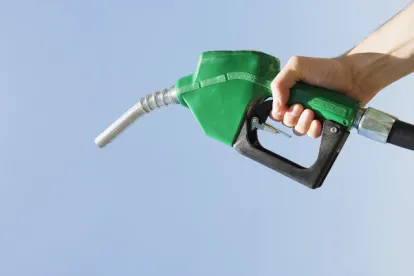Facing shortages in its domestic gas supplies, the Egyptian Natural Gas Holding Company (EGAS), Egypt’s state-owned gas company, has opted to install floating regasification facilities in the Ain Sokhna port and received its first LNG cargo in April 2015. This article considers why floating regasification offered an effective solution to the supply challenges faced in Egypt, as well as exploring some of the wider reasoning that lies behind the recent surge in global use of such facilities.
Floating regasification and its rising use
“Floating regasification” is a generic term used to cover various systems that allow for the conversion of liquefied natural gas into natural gas (known as “regas” in industry parlance) on board a vessel. Floating regasification has become an increasingly used technology: in 2006, it represented just 0.8 per cent of the total share of global regasification capacity; by 2015, it was 8.8 per cent and is still rising, with at least three further projects expected to come online later this year.[1]
The most common system used is the floating storage and regasification unit (FSRU). As their name suggests, these are vessels that are able to receive, store and regasify LNG, and deliver the regas through a mooring system (either at a dock/receiving terminal or an offshore buoy). FSRUs can be purpose built, or result from the conversion of more conventional LNG storage/supply vessels. There are 21 FSRUs understood to be in operation across the world.[2]
EGAS is using a FSRU, which it procured from Höegh LNG Holdings Ltd (a Norwegian specialist in providing such vessels). EGAS has reportedly said that it is already looking to charter a further unit from Höegh.[3]
Advantages of floating regasification
FSRUs offer a number of advantages to gas-supply-chains seeking access to LNG regasification capability in order to satisfy natural gas demands:
Speed of project delivery and regas availability
A critical feature is the ability to quickly design, develop and complete a floating regasification project, particularly when compared with land-based projects. This is shown by the Egyptian case. Contracts were signed between EGAS and Höegh in November 2014 for the provision of the FSRU and it was installed in port by March 2015. EGAS was also able to quickly hold and finalise its tender arrangements for LNG supply, along with entering into LNG sale agreements with Gazprom and Sonatrach.
Aside from the design and engineering factors (and subject to vessel availability), a FSRU project is likely to be documented and implemented far quicker than an onshore facility. This is due to a variety of factors, not least because (beyond the port facilities and any associated pipeline) there is no need to procure any land for the project site. This removes myriad issues and delays often caused by land acquisition. There may also be reduced permitting and HSE requirements. This all invariably helps to shorten the project delivery timetable.
Flexibility in use
FSRUs are available to be hired under relatively short-term arrangements (as is explored below). This eliminates the need for project developers to sink extensive costs into a permanently located regas facility. It also opens a range of possible project. For example, the FSRU could be used to supply regas where only needed seasonally, or where the expected gas demand is small or expected only to last a short time. It can also operate as a temporary source of regas pending the completion of onshore facilities. Once the gas supply requirement has come to an end, the FSRU hire arrangements can also finish and the FSRU relocated to another project.
The ability to hire FSRUs also means the costs for their use and installation can be relatively modest (in contrast to the upfront expense of developing onshore facilities or pipelines).
As a result, FSRUs offer the opportunity to supply gas to projects and areas where any combination of economic, technical, environmental, seasonal and/or commercial factors make it impractical to construct a pipeline or onshore regasification facilities.
The FSRU charter party
A critical project matter is the basis for obtaining the FSRU. In Egypt (and as has been commonly the case elsewhere), this was done via the latter route, through a charter party.
In a charter party, the vessel owner promises to make a prescribed FSRU available for use within a delivery window at a named location with a specified regas and storage capacity. Usually the owner will provide the crew and operate the FSRU (and the charter not made on a bareboat basis).
The charterer’s principal responsibility is to provide adequate port/docking facilities for the mooring of the FSRU and for offtaking the regas. The charterer is also the party that sources the LNG that will be processed by the FSRU.
Payment for the FSRU is typically organised through a day hire rate. There will also often be a pro rata reduction to this rate to the extent that any processing/storage capacity is unavailable. FSRU owners will seek some flexibility to this regime and include measures such as an “off hire allowance” to allow for downtime without penalty.
FSRUs and wider project considerations
There are various issues and challenges that arise in using floating regasification as part of a gas supply structure:
-
Regas capacity constraints: FSRUs offer limited storage and processing capability (when compared with a land-based facility). Accordingly, it will only offer an optimal solution for certain levels of natural gas demand (and this will be a much lower quantity than available with onshore regas facilities). For a project to be successful, it is necessary to match the LNG-supply availability and FSRU capacity with the market demand for the regas produced.
-
Project interface risks: it may be difficult to properly allocate risks arising throughout the gas contracting chain, which can be long and complex. This is not a feature exclusive to floating regasification, but the terms of the charter party and its potential remedies can raise additional complications, especially when compared with integrated upstream/midstream/downstream onshore LNG projects. In particular, this may expose the regas-supplier participant to increased economic risk upon non-performance by the FSRU.
For example, there may be issues in reconciling the different contractual consequences arising from a failure by the FSRU to meet the contracted regasification rates. Under a charter party, such remedies are often limited to a reduction in the daily hire rate. This may not align with the downstream consequences arising under related gas supply agreements, usually requiring the gas seller to provide its buyer with a “shortfall gas” discount or other liquidated damage.
There are also unique operational factors, such as requirements for periodic dry-docking of the FSRU where it will be unavailable for use and “off-hire”.
-
Supply-side risks: non-supply or off-specification supply risks exist in any regasification project, though can be exacerbated due to the LNG storage capacity limitations of a FSRU. It may require more frequent deliveries and smaller cargo sizes, which can create operational and supply-availability concerns. This may also cause the overall cost of LNG supply to be more expensive than with a conventional land-based LNG facility and therefore challenge the economics supporting the project.
Conclusions –floating regasification as an option to meet gas supply demands
The gas position of Egypt has dramatically shifted in recent years. From being an exporter of natural gas/LNG to its neighbours, Egypt now faces critical gas shortages that have left it unable to satisfy its domestic gas demands. In the medium and long term, this trend could be arrested and indeed reversed, as the country’s declining gas production is improved through increased upstream investment and new offshore exploration, along with the (possible) availability of gas imports from neighbours such as Israel and Cyprus. Floating regasification therefore offers two solutions to the present Egyptian circumstances: the quickest route to facilities that will allow for receipt of gas imports; along with the flexibility to efficiently restructure or remove such facilities/capacity as and when gas production improves.
More generally, it can be seen that FSRUs are proven as viable technology; they also now increasingly offer an attractive commercial and economic solution to meet short-term and/or flexible gas demand.
[1] Source: the U.S. Energy Information Administration 27 April 2015: http://www.eia.gov/todayinenergy/detail.cfm?id=20972
[2] Source: the U.S. Energy Information Administration 27 April 2015: http://www.eia.gov/todayinenergy/detail.cfm?id=20972
[3] Source: http://archive.crossborderinformation.com/Article/%ef%bb%bfEgypt+Floating+regas+unit+installed%2c+first+gas+from+Qatar.aspx?date=20150416#



 />i
/>i
